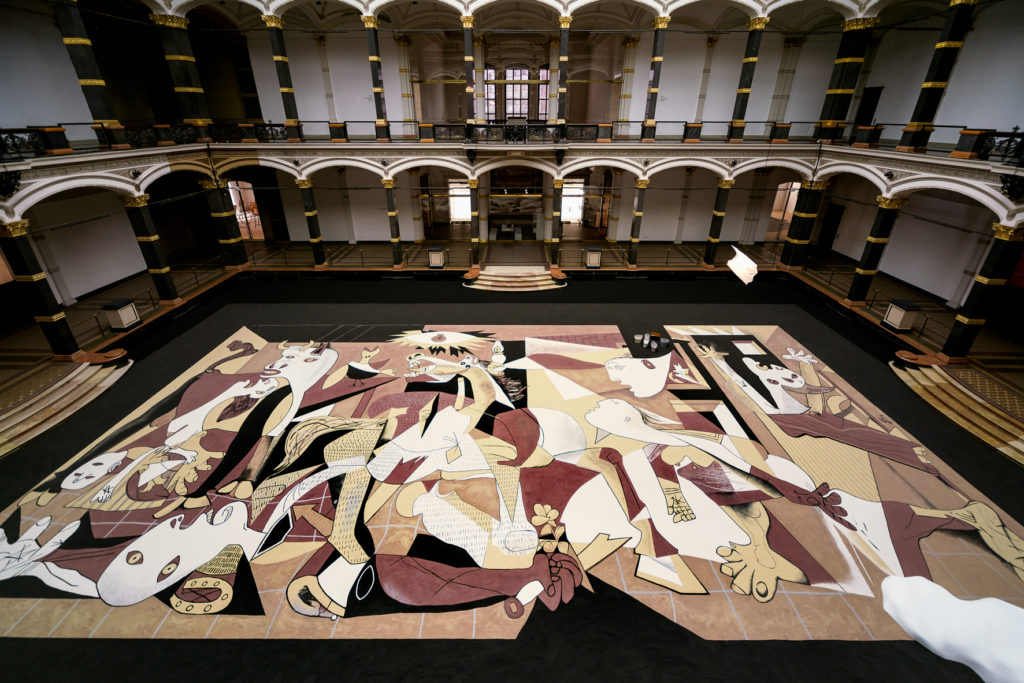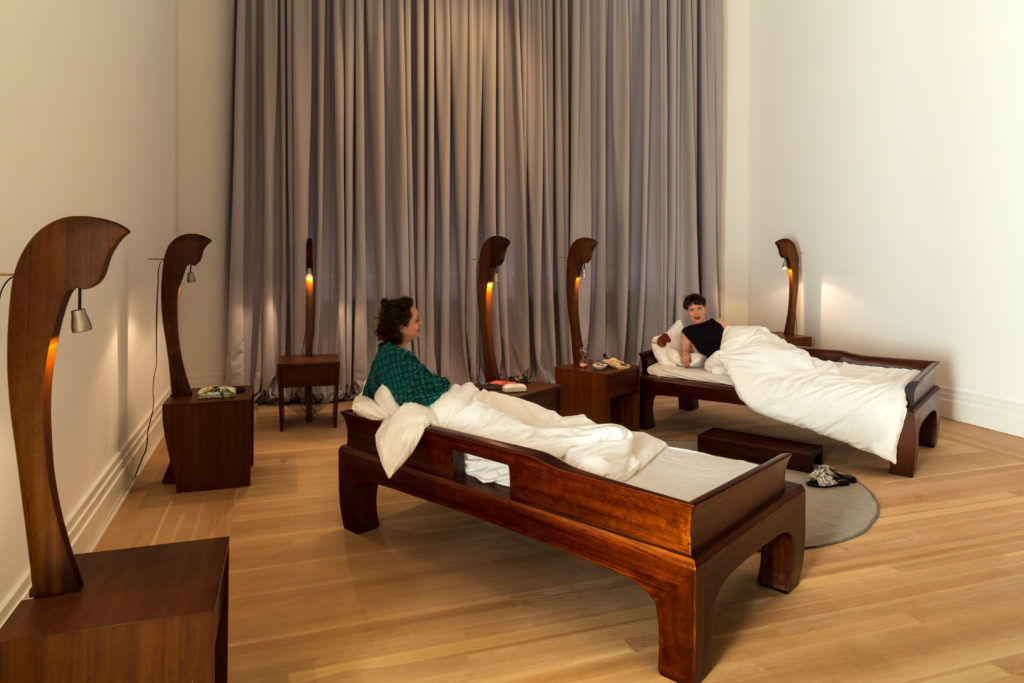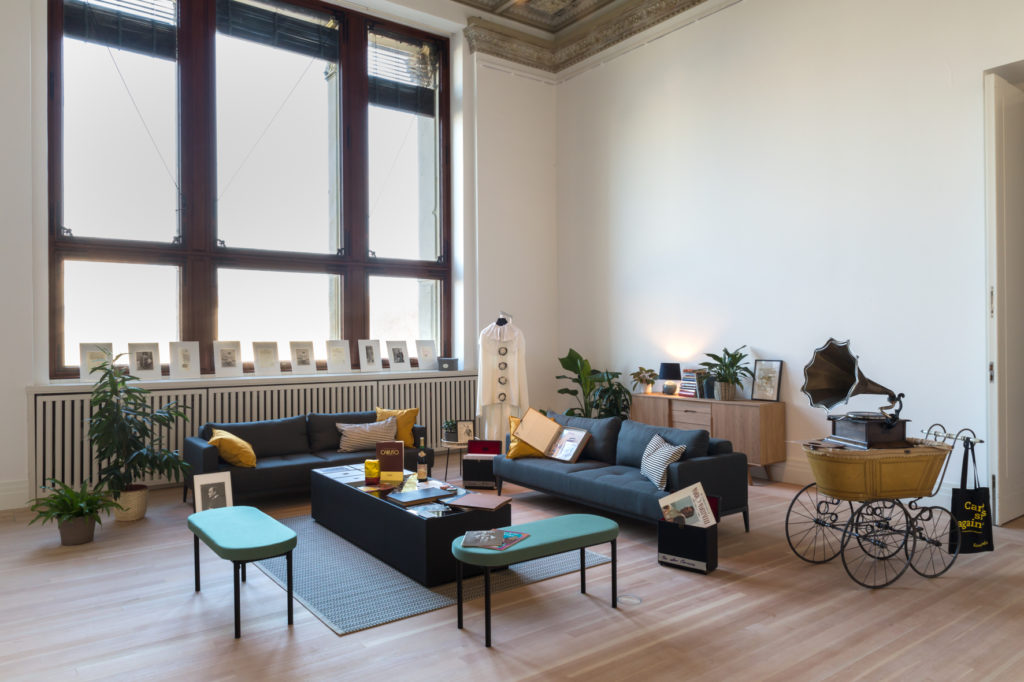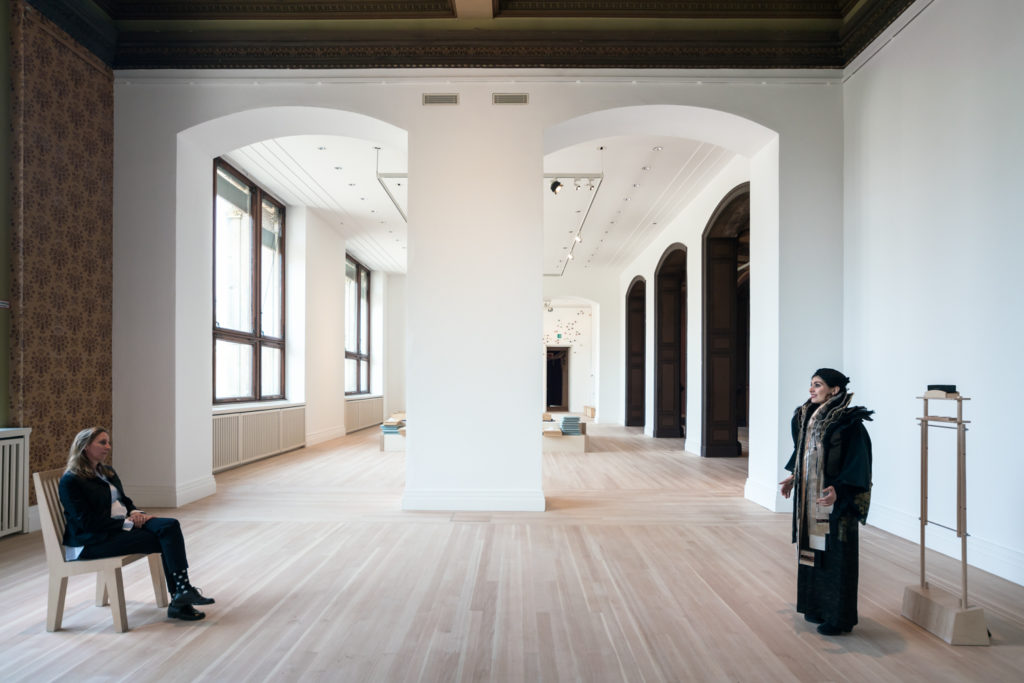Lee Mingwei was lucky. At the urging of the Gropius Bau’s curators, the New York-based artist caught one of the last flights out of Berlin before travel restrictions were put in place this March. It was not without compromise: As his plane took off, Lee was leaving behind a major retrospective just as he would otherwise have been completing its finishing touches. His largest museum exhibition in Germany to date was just a week away from its public unveiling.
“There was no way I could plan or see this coming at all,” he tells me on a Zoom call last week from his New York home in the Financial District, where he is self-isolating with his husband between sparing trips to the store and for jogs. “But the curatorial team knew this project like the back of their hands. It became truly a collaboration between them, myself, and my studio.”
His show “禮 Li, Gifts and Rituals” at the Gropius Bau has become something of a blueprint for how museums around the world can expect to operate after their respective lockdowns subside. But this one was arguably more complicated than most: Nearly every major work in the decades-spanning exhibition is viewer-activated, incorporates a durational performance, or requires tactile elements of exchange among people. There are shared spaces that include beds. In one piece, clothes are exchanged.

Lee Mingwei (2006–present). Installation view Lee Mingwei: 禮 Li, Gifts and Rituals, Gropius Bau, Berlin. Photo: Laura Fiorio.
While this might sound like an impossible hurdle in this new age of social distancing, Gropius Bau director Stephanie Rosenthal says the show was actually a rather ideal project to reimagine with new hygiene precautions. “Lee’s work is all about conversation, listening, and care, so putting new measures in place felt applicable to the thematics of his work,” she tells me. She also points out that the question of safety is two-fold: “We asked ourselves what we needed to do so that everyone is safe and then, secondly, what is needed so that everyone safe.”
Within a week of museums and galleries reopening in Germany, we have very quickly all learned what safety looks like. Enforced mask-wearing, extra-watchful guards, QR-code contactless ticketing, timed entries, and a singular direction flow for visitors are rapidly becoming the new normal. But the puzzle of how to integrate hygiene measures into art installations was, of course, more delicate and perplexing. And Lee is an artist for whom hosting, comfort, intimacy—sitting on couches, leaving behind personal items, giving and receiving—is essential.
The Era of Mellow Museums
I stepped through the Gropius Bau’s ornate doorway for the first time in a long while last week to find the galleries peppered with a handful of locals. I caught the attention of one Berliner as she took in the view of Lee’s monumental piece from the second-floor balcony. “It’s so calm,” she says with a sigh. “There is the possibility to really watch and look at works at my leisure. We always come to the Gropius Bau. And museums were the only thing we really missed, so we came at the first opportunity.”

Lee Mingwei (2000/2020). Installation view Lee Mingwei: 禮 Li, Gifts and Rituals, Gropius Bau, Berlin, 2020. Photo: Laura Fiorio
Lee’s varied installations are certainly a balm for these times of isolation and bodily insecurity. Vulnerability is gently provoked, though not demanded, from viewers. In (2000/2020), visitors may sit down with a host, selected by Lee, who has laid out a personal collection of objects (in this case, the host, Katrin, was presenting her Christmas ornaments). In the revised version, only one person can sit down on the couch at a time.
“I did already hear from the living-room host, Katrin, who was there the first day,” Lee says. “She was very happy and she said there was a lot of long conversations that helped her understand her own collection.”
Most poignant of all was , a performance that sees a dancer sweep a mound of rice through the gallery space along a labyrinthine path of their choosing. The studious care-taking from the performer, not to mention the experience of intimacy in watching a stranger, transfixed both me and the guard in the gallery. For a show about gifts, it was unexpected to receive the privilege of space in what are usually packed halls.

Lee Mingwei (2000/2020). Installation view Lee Mingwei: 禮 Li, Gifts and Rituals, Gropius Bau, Berlin, 2020. Photo: Laura Fiorio
Other projects required more extensive re-thinking. , one of the oldest works in the show, invites two strangers selected by lottery to spend a night in the museum together and then asks them to leave items from their night tables at home behind. “That is a project that will be permanently sleeping for now,” laughs Lee. He and Rosenthal arrived at a thoughtful compromise: Staff from the museum have contributed personal items of their own to activate the project.
Returning to a Different Normal
Rosenthal says the museum has been pleasantly surprised by the number of visitors. On Monday, 210 people attended—a fraction of the around a thousand who would normally pass through, but still, she felt, a success. Yet the loss of ticketing revenue is going to pose a serious problem in the long term. “Ticketing makes up a critical part of our budget,” she says. “In a month, we will better be able to evaluate how the lower visitor numbers is actually impacting us and make a better prediction for future programming.”
And Lee, though deeply wishing he could be in Berlin, has been busy speaking with his performers and participants on Zoom. He has also been in dialogue with museums that are eager to learn how the project is functioning post-lockdown. “Quite a few of my curator friends are eager to find out how the Gropius Bau is managing this show,” he says. “Part of my work is about communication, so this fits in nicely that I have now become a conduit of this particular knowledge.”

Lee Mingwei’s performance piece Credit: Laura Fiorio
But—again, luckily—Lee had been seeding his thinking process with the institution for two years already. Going into the show, Rosenthal and her curatorial team had a very clear understanding of the artist’s vision and working process. So did the security guards and the museum administration; he had conducted workshops with them as he sought to absorb the fabric of the historic museum and its team, and share his own working process. Because these conversations were already well underway when the lockdown was imposed, they were relatively easy to move online.
While the museum was closed, delaying the show’s opening, some works were also transposed onto the internet. The artist created a new version of his work , originally designed as a one-on-one serenade by an opera singer, for a virtual guest on Instagram. The real is on view now at the Gropius Bau, but a large sheet of plexiglass on wheels stands between the seated viewer and the performer.
“I can imagine there are exhibitions where it could work against it,” Rosenthal says, adding that it was pure luck that so much of Lee’s performances pieces are about one-to-one interactions. “So far, the participants and the performers have said that it doesn’t make a difference because the critical parts of the piece are still achieved. These changes due to safety precautions are a matter of re-coding—it is interesting how quickly we re-program ourselves.”
The show seems to offer some comfort to curators and institutions who may feel that anything more experimental than a painting show could be stymied by the new normal. “Performance art will likely suffer the most,” Rosenthal says. “It is very difficult to plan right now and every kind of work requiring several people in a room creates a potential danger. On the other hand, you do not need transport, so it is more flexible. Aesthetically, it can be difficult but from a conceptual approach it works. Disinfection becomes another ritual. Plexiglass is a symbol of care.”
Source: Exhibition - news.artnet.com



